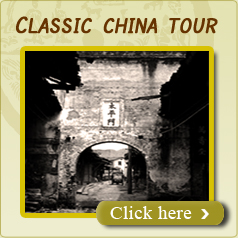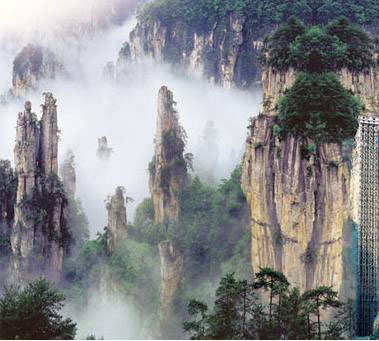Jingzhou

Jingzhou was made a county seat in the year 1103, during the 2nd year of the reign of Song Emperor Chongning. In the Ming Dynasty (1368-1644), its location, along the border where Hunan, Guizhou and Guangxi meet, made it a prominent town in the region. During the reign of Qing Emperor Qianlong, businesspeople from surrounding areas set up their shops in Jingzhou, which enjoyed a period of great prosperity.
In the evening, we took a walk through the city. We came upon a mall, lined on both sides with shops, small restaurants and places of recreation in the new city area. Here can be found several simply equipped karaoke bars, with cozy rooms big enough to accommodate a few sofas, a television set and fundamental items of furniture. The entrance to these bars is either through a sliding door or a maroon curtain draped over the doorway, where a pretty girl stands to greet incoming guests. At the end of the street is the Wangjiang (Overlooking the River) Tower, known as the first tower of southwest Hunan. The tower is brightly illuminated, and with the nearby musical fountain, provides the perfect setting for an evening stroll. On our way back, along one of the city's rivers, our enjoyment of the scenery was enhanced by small bridges spanning the river, a huge windmill in motion, and a few typical wooden Miao buildings.
The following morning, we went along to the opening ceremony of a country fair being held in the city. It seemed that all the citizens of the town were out that day. As soon as the opening signal was given, people flocked to the market center. In addition to sales of home-made snacks, farm products, and leather shoes, games of ring-toss and marbles attracted numerous punters, eager to spend their cash. Snake charmers also drew crowds, along with those selling Tibetan knives. The area where lottery tickets were being sold was awash with people. When the winning numbers of the lottery were announced over the loudspeaker, the lottery winners were so excited they could barely respond.



